There are as several methods of roasting but perhaps the most common include the use of either drum roasting or fluid bed roasting systems.
Drum Roasters
Drum Roasters are perhaps the most economical and most widely used form used. Its design is relatively simple, consisting of a rotating cylindrical drum with heat being applied either directly under the drum or through the center through a conduit. The actual heat can come from electric heating elements or gas flames controlled with or without the use of a profile controller.
In the drum roasters, heat is transferred thru conduction (~25%) with the vast majority coming from convection (~75%). Temperature measurements are reported usually by two gauges on the system - one measuring the actual flame temperature and the other measuring ambient bean temperature within the drum (usually via a thermocouple). The figure below shows a typical diagram of a drum roaster.
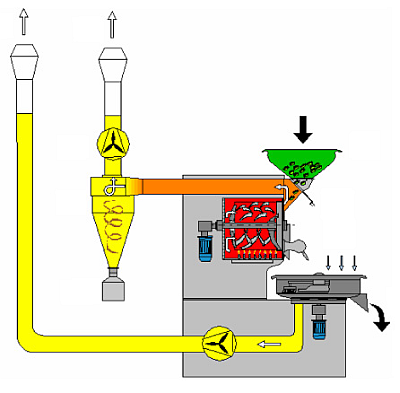
Typical Drum Roaster Diagram - photo credit Probat Roasters
For the most part drum roasters work great but in extreme conditions are subject to temperature variability within the drum, causing tipping and/or scorching. Both of which can occur if too much heat is applied or if the speed of the rotating drum is set too high, allowing the centrifugal force to push the beans against the barrel and transfer too much heat on a section of the bean(s).
Drum roaster can vary greatly in capacity, from small "sample roasters" usually with a capacity of 200-500 grams and used mainly for laboratory and quality control use. While a few commercial units can roast anywhere from one bag (120 lb) to over 5,000 lbs plus in a single batch.
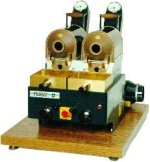 |
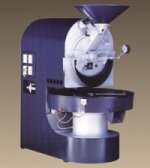 |
| Probat Sample Roaster | Probat L25 Roaster |
Fluid Bed Roasters
Developed in the 1970's by Michael Sivetz, the fluid bed roasters rely on a completely different system for roasting. The system which consists of a tall cylinder allows hot air to flow through a chamber providing a homogeneous distribution of heat.
Unlike the drum roaster, the fluid bed roaster uses convection to deliver heat and has distinct roast characteristics.The following video shows how a typical fluid bed coffee roaster operates.
There are several advantages to using a fluid bed roasters including its ease of clean up, less time during roasting and have roast uniformity. Many people attest that the coffee roasted in a fluid bed produces a better cup, but sensory studies have yet to confirm the claim. Typical roast times for fluid bed roasters are roughly half that of drum barrel roasters.
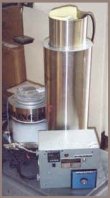 |
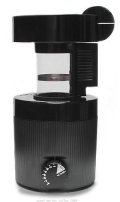 |
| Sivetz Fluid Bed | Fresh Roast Plus |
Formation of Carcinogens from Drum Roasters
According to Michael Sivetz, inventor of the modern fluid bed roaster - in a drum roaster, the chaff that comes off the beans remain in the drum and quickly carbonizes. It is here, he claims, that the formation of numerous carcinogens are created and ultimately pose a threat to consumers.
 |
 |
 |
| Furan | Acrolein | Acrylamide |
The theory which has yet to be scientifically proven is explained in Michael Sivetz's own article entitled "Comparing Drum to Fluid Bead Coffee Roasters"

